ANDREWS, Sybil
Sybil Andrews was born at Bury St Edmundís, Suffolk on 19 April 1898, second daughter of Charles Andrews, an ironmonger, and his wife Beatrice Martha nťe Trigg (1868-7 April 1929), eldest daughter of Henry Trigg of Babwell Friary, Fornham All Saints', Suffolk, who married at St Mary's Church, Bury St Edmundís on 1 June 1893. In 1911, the family were living at 117 Northgate Street, Bury St Edmundís from where Sybil attended the local art school. During the First World War she worked in Coventry, building aeroplane parts at Standard Motor Company, after which she moved to Bristol as an oxy-acetylene torch welder and, in her spare time, studied art by taking a John Hassallís art correspondent course which introduced her to different artistic media and sets her towards a career as an artist. After the War, she returned to 117 Northgate Street, Bury St Edmund's from where she met Cyril Edward Power, who would influence her work, and with whom she would share a workshop for much of her early working life, and would later collaborate on commissions from The London Passenger Transport Board, signing their works with the pseudonym ĎAndrew Powerí and they had a joint exhibition at Crescent House, 28 Angel Hill, Bury St Edmundís in December 1921. In 1922 Andrews enrolled at the Heatherley School of Fine Art, London under Henry Gibbs Massey (1860-1934) and the following year Sybil opened her own studio at 33 Warwick Square, Westminster. She helped establish, and was the first secretary (1925-1928), of the Grosvenor School of Modern Art, learning to make linocuts under the influence of (Walter) Claude Flight (1881-1955). In 1928 she established a new London Gallery at 2 Brook Green, Hammersmith, which may have been associated with Brook Green School of Art, and began to make dry point works of popular architectural subjects. Sybil had exhibitions at the Redfern Gallery 1929-1936, the National Gallery of Canada and at Prague, Vienna, and Bucharest in 1935, she also exhibited at Goupil Gallery; Royal Society of British Artists and the Royal Society of British Artists 1922-1938 from London and Woolpit, Suffolk. In 1942 she started war work in the yards of the British Power Boat Company at Hythe, Southampton where she met Walter William John Morgan (1894-1986) whom she married at Lymington, Hampshire on 6 November 1943. After the war she returned to Bury St Edmund's but in 1947, together with her husband, moved to Canada making their home in the remote logging town of Campbell River, British Columbia. Sybil Andrews was elected to the Society of Canadian Painters, Etchers, and Engravers in 1951 when her linocut 'Indian Dance' was selected as the presentation print. As well as teaching she continued her own art and in 1975 completed one of her major works 'The Banner of St Edmund', which is hand embroidered in silks on linen and first conceived, designed, and begun in 1930, this banner now hangs in the Treasury of the St James Cathedral, Bury St Edmund's. One of the largest collections of her work in public ownership is held by St Edmundsbury Borough Council Heritage Service, Bury St Edmundís which includes several early watercolour paintings, executed while the artist was still living in Suffolk, and the Glenbow Museum, Canada, which is a major centre for the study of her work, with a collection of over 1,000 examples. Sybil Morgan died at Campbell River, Canada on 21 December 1992. She signed her work 'Sybil Andrews' with a long dash between the 'W' and the 'S'.
Works by This Artist
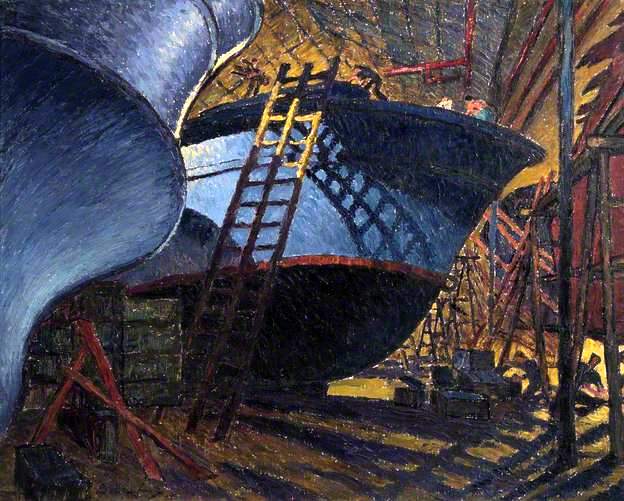
|
Motor Gun Boats, British Power Boat Company Limited, Hythe, SouthamptonOil on canvas
|
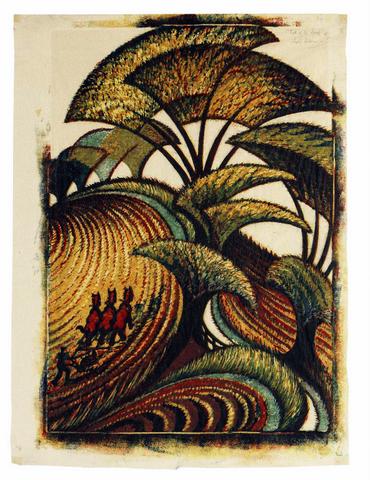
|
Fall of the LeafLinocut
|
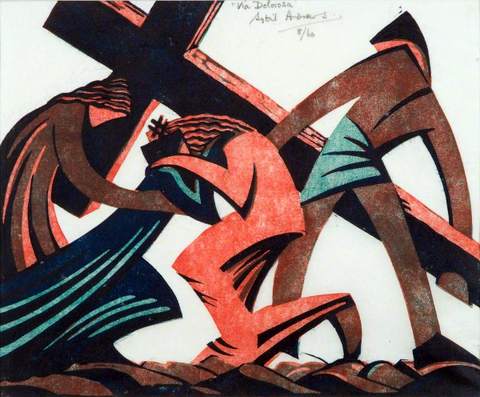
|
Via DolorosaColour linocut on paper
|
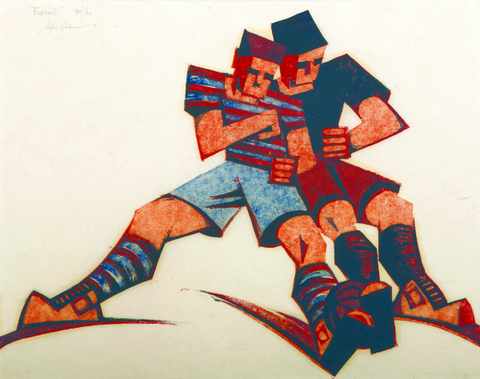
|
FootballColour linocut on paper
|
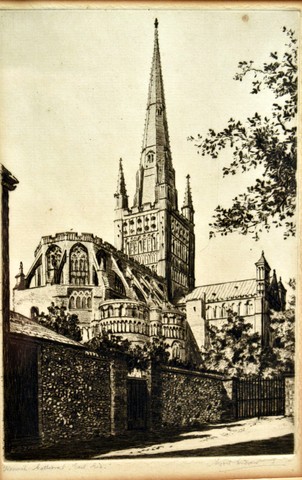
|
Norwich Cathedral East EndEtching
|
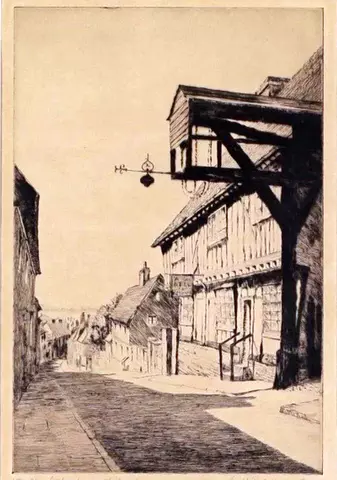
|
The Old Stockyard, WoodbridgeEtching
|